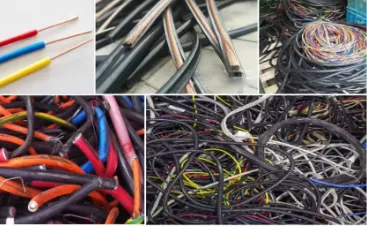

ное. . 18, 2024 12:47 Back to list
Electronic Rubbish Collection Tackling the E-Waste Crisis
In an increasingly digital world, the proliferation of electronic devices has brought about significant convenience and technological advancement. However, it has also resulted in a growing concern electronic waste, or e-waste. E-waste encompasses discarded electronic appliances such as computers, smartphones, televisions, and other gadgets that have reached the end of their lifecycle. As consumers continuously upgrade to the latest technologies, the volumes of e-waste generated globally have skyrocketed. This article explores the implications of e-waste, the importance of efficient electronic rubbish collection, and steps that individuals and communities can take to combat this environmental crisis.
The rapid advancement of technology often leads to planned obsolescence, where devices are designed to become outdated after a short period. This practice, combined with the increasing consumer demand for better and more efficient electronics, means that old devices are discarded at an alarming rate. According to the Global E-Waste Monitor, approximately 53.6 million metric tons of e-waste were generated in 2019, and this figure is expected to rise to 74.7 million metric tons by 2030. The staggering volume of e-waste not only poses a threat to the environment but also to human health. Many electronic devices contain hazardous materials such as lead, mercury, and cadmium, which can leach into the soil and water supply, leading to serious health complications.
To address the e-waste crisis, effective electronic rubbish collection systems must be established. Efficient collection methods ensure that discarded electronics are properly managed, reducing the amount of waste entering landfills and preventing toxic substances from contaminating the environment. Communities across the globe are adopting various strategies for e-waste collection, including designated drop-off centers, organized collection events, and partnerships with recycling organizations. These initiatives encourage responsible disposal and recycling, allowing valuable materials to be recovered and reused.

One of the most critical aspects of electronic rubbish collection is public awareness and education. Many individuals are unaware of the impact of e-waste and the proper methods for disposal. Educational campaigns can help inform the public about the importance of recycling electronics and the environmental benefits associated with it. Providing clear guidelines on how to recycle e-waste, including information about local collection points or recycling events, can significantly increase participation in e-waste recycling initiatives.
Retailers and manufacturers also play a crucial role in managing e-waste. Implementing take-back programs allows consumers to return old devices when purchasing new ones. This not only simplifies the recycling process for consumers but also encourages manufacturers to take responsibility for their products and invest in sustainable practices. Additionally, designing products with recyclable materials and longer lifespans contributes to reducing e-waste generation in the long term.
As a community, we can take proactive steps to address the electronic waste crisis. Regularly decluttering our electronic devices and responsibly recycling them can make a significant impact. Hosting community collection drives or collaborating with local organizations to facilitate e-waste recycling events is also an effective way to raise awareness and encourage responsible disposal. It is essential to promote a culture of sustainability where recycling becomes the norm rather than the exception.
In conclusion, the challenge of electronic rubbish collection is significant, but it is surmountable through collective efforts and responsible practices. By enhancing awareness, establishing efficient collection systems, and promoting sustainable habits, we can mitigate the e-waste crisis and protect our environment for future generations. In a world driven by technology, it is our responsibility to ensure that our electronic footprint is as light as possible. Let us act now to create a cleaner, greener world where technology and environmental consciousness coexist harmoniously.
Latest news
Troubleshooting Common Eddy Separator Problems
NewsJul.04,2025
The Role of Metal Recycling Plants in Circular Economy
NewsJul.04,2025
The Impact of Recycling Line Pickers on Waste Management Costs
NewsJul.04,2025
Safety Features Every Metal Shredder Should Have
NewsJul.04,2025
How Industrial Shredders Improve Waste Management Systems
NewsJul.04,2025
How Cable Granulators Contribute to Sustainable Recycling
NewsJul.04,2025